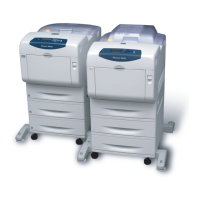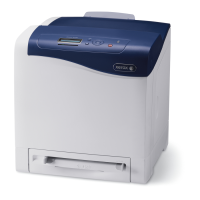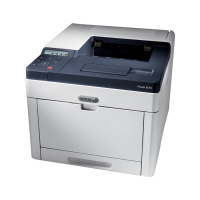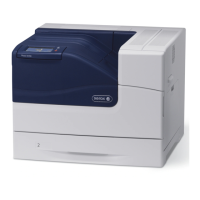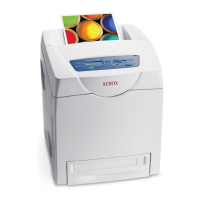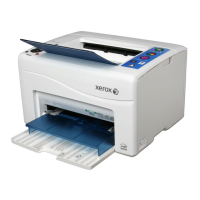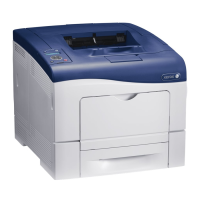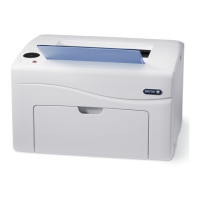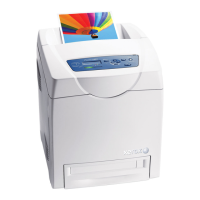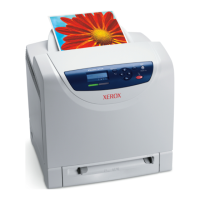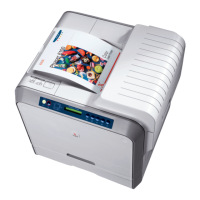Theory of Operation 2-9
Process Control
For stable printing, the parameters related to forming both the electrostatic and toner
image are continuously monitored and adjusted by the printer. Parameter correction
and control over the entire printing process is called “process control”. There are two
main areas of control:
■ Bias Control
■ Toner Density Control
To supplement these two controls, the following are provided:
■ High-Area Coverage Mode Control
■ Admix Mode Control
■ Toner Density Control (CTD) Sensor (ADC - Automatic Density Control) LED
light density setting.
Bias Control
To attain stable image density, toner density is monitored for each color and the drum
charging voltage and biasing DC voltages are adjusted accordingly.
The bias control adjustment is made immediately before the start of printing, if any of
the following conditions is satisfied:
■ First print produced after the power on.
■ Cumulative print count exceeds 16 since power on.
■ A cleaning cycle is executed during continuous printing.
Bias control operates as follows:
1. The Temperature/Humidity Sensor provides input to establish target values of the
drum charging voltage and biasing DC voltage.
2. Bias control test patches (see the adjacent figure
for patch configuration) of each of the four toner
colors (yellow, magenta, cyan, and black) are
generated and transferred to the Transfer Roller.
3. The CTD (ADC) Sensor compares an area on the
Transfer Roller where no toner is present with the
test patches to determine toner density for each of
the four colors.
4. The density measured in Step 3 is compared with
the target value set in Step 1 and the resulting
difference is used to adjust the drum charging
voltage and the biasing DC voltage for each toner
color.
Y
M
C
K
About 11 mm
About 57 mm
s6300-066
About 12 mm
About 3 mm
